Negative Scenario for Modi’s India “Acts East”
Positive Scenario for Modi’s India “Acts East” Take Two: A Response to Manish Tewari
Daniel TwiningAmerican officials worked closely with the previous Indian government, led by the Congress Party and Prime Minister Manmohan Singh, to build a wide-ranging strategic partnership after decades of geopolitical alienation between the world’s largest democracies. Since India’s May 2014 elections, they have worked closely with the current Indian government, led by Narendra Modi of the Bharatiya Janata Party, to elevate that strategic partnership. The United States takes no position on India’s domestic politics, but it notes that the Indian electorate delivered an overwhelming mandate to Modi in last year’s elections. It welcomes his activism in foreign policy, not only through closer cooperation with the United States but through a series of creative measures to expand India’s strategic space in East and South Asia as well as to enhance its soft power globally.
Modi has made several welcome changes in foreign affairs that benefit Indian national interests. First, he has abandoned the non-aligned mentality that viewed partnership with the United States as some sort of infringement on Indian sovereignty (although this dated mindset still holds sway in the bureaucratic back-alleys of the Ministry of External Affairs). In fact, India’s strategic autonomy is enhanced by cooperation with America, which has invested concertedly in helping to strengthen India’s capacities to defend itself, to develop its economy, and to improve the welfare of its people.
A strong, prosperous India that works with the United States when and where their interests converge is a much better steward of its own sovereignty than a weak, poor India acting alone to manage Chinese power, to secure the Indian Ocean sea lanes, and to relieve its economic and energy bottlenecks. Modi is confident enough to discard the old shibboleths about India “virtually becoming a junior partner, if not a client state, of the United States,” in the words of Manish Tewari. A nuclear-weapons power of 1.3 billion people with one of the world’s largest standing armies and an economy expanding by 7.5 percent a year will be a junior partner, much less a client state, of no one.
Second, Modi intuitively understands that India cannot fulfill its aspirations as a great power as long as it is constrained by local hostilities in its near neighborhood. His government’s outreach to Sri Lanka, Bangladesh, Myanmar, Bhutan, and other nations on and around the subcontinent has created significant goodwill—and improved India’s strategic situation—after years in which India’s smaller neighbors felt alternately bullied and ignored by the regional hegemon in their midst. Improving ties with India’s neighbors constrains China’s ability to penetrate the subcontinent and should create a stronger foundation for much-needed regional economic integration that leverages India’s economic engine to help develop all of South Asia.
Mr. Tewari is, nonetheless, correct to highlight Nepal and Pakistan as relationships where there may be room for more creative Indian diplomacy. New Delhi has employed economic pressure in an unsuccessful and resented effort to block adoption of a new constitution in Kathmandu that prejudices the political representation of Madhesi residents of the Terai, who historically have enjoyed close ties to their Indian brethren. This has created unusual levels of ill will among Nepal’s historically pro-Indian governing elite, who have successfully used India as a foil to divert attention away from flaws in the proposed constitution. Some Nepali officials seek to counter what they perceive as Indian interference in their domestic affairs by nurturing closer ties with Beijing—an outcome that would be highly inimical to Indian security interests.
More consequentially, Mr. Tewari highlights the degeneration in India’s relations with Pakistan since Modi assumed office as an example of diplomatic negligence. Without being fatalistic, there is a “damned if you do, damned if you don’t” quality to New Delhi’s engagement with Islamabad. In 1999, Prime Minister Vajpayee made a historic visit to Pakistan, where he announced the famous Lahore Declaration envisioning normal relations between the troubled neighbors. The Pakistan army launched the Kargil War against India only months later, which was followed by a Pakistani terrorist attack on the Indian Parliament that led dangerously to an armed standoff verging on war between the two nations in 2000-2001. Vajpayee’s successor Singh was personally committed to peace with Pakistan and made an array of attempts at outreach, including the controversial Sharm-el-Sheik Declaration. But his tenure was marred by a violent assault by Pakistani terrorists allied with that nation’s security establishment against India, including attacks against the Indian embassy in Kabul and the vicious terrorist assault on Mumbai in November 2008.
As long as the Pakistan army controls Islamabad’s security policy and defines permanent peace with India as a threat to its institutional interests, no amount of Indian outreach to Pakistan’s civilian leadership will be sufficient to create a normal relationship between the countries. This does not mean India should pursue a policy of pure containment or take a “do-nothing approach”; encouragingly, Modi met his Pakistani counterpart, Nawaz Sharif, in Paris in early December, and the Indian and Pakistani national security advisors subsequently conclaved in Bangkok. More significantly, Modi has announced plans to visit Pakistan in 2016—a trip Singh never made while he was prime minister. More such engagement would indeed be fruitful, if only to continually test whether the two countries can take practical steps—for instance, on trade facilitation at the border—to mellow the cold war between their security establishments (but not their peoples). Pressure from the Obama administration for India to make unilateral concessions to Pakistan is likely to be counterproductive, as the greatest progress in Indo-Pak relations has occurred when Washington got out of the way.
One way for India to create a different equation with Pakistan is to help improve governance and security in Afghanistan, which the security establishment in Rawalpindi seeks to control or at least keep off-balance in order to prevent it from falling under New Delhi’s influence. For the past decade, India has been training Afghan civil servants and building civilian infrastructure; it recently has trained limited numbers of Afghan security forces in India. Early in 2016, for the first time, the Indian government will transfer military hardware, in the form of Russian-made attack helicopters, to the Afghan National Army, to strengthen its capacity to take on the Taliban. This is a welcome development after years in which India’s cautious, Congress-led government sought to keep a low profile in Afghan affairs. It could help the Kabul government develop leverage to conduct negotiations with the Taliban to end the war from a position of strength. New Delhi opposes any Taliban representation in the government in Kabul, but a long-running civil war in Afghanistan that continues to attract Pakistani meddling is more detrimental to Indian interests than a robust political settlement under democratic safeguards could be. China’s leaders understand this with respect to their own Afghan equities, which is why they have sought to midwife political negotiations between the Afghan government and the insurgents.
With respect to China, Modi has been refreshingly candid. He has argued that India and other Asian powers need to push back against China’s “expansionist mindset,” has sought vigorously to build up India’s economic and military power so that is wields the capabilities to do that, and has broken a taboo by saying that India is open to an “alliance” with the United States to advance their mutual interests, which include managing Chinese power. At the same time, Modi has sought to ramp up economic engagement, lifting foreign investment restrictions imposed by previous Indian governments and traveling repeatedly to China to solicit commercial deals and investment.
The previous Indian government pursued a more cautious approach to Beijing; senior officials even spoke at one point of maintaining “equidistance” between the United States and China in order to enhance India’s room for maneuver between them. That talk is gone, as senior officials in the Modi administration, including the prime minister, national security advisor, and foreign secretary, take a justifiably more hawkish approach to a northern neighbor that has claims on Indian territory and pursues policies to strategically encircle India. Modi’s efforts to prime India’s economic growth are also premised on his understanding that “a strong economy is the driver of an effective foreign policy” and the stimulant to “much-needed military modernization;1 India is surely more secure growing in the seven to eight percent per annum range than it was in the late years of the previous Congress-led government, when growth collapsed below five percent.
In East Asia more broadly, the Modi administration has showed more continuity than change with its predecessor. Japan remains India’s key strategic and economic partner in East Asia. Singh argued eloquently that an India-Japan axis of interests and values would be decisive in shaping Asia’s future order; the “bromance” between Modi and Prime Minister Shinzo Abe is a more personal expression of this synergy, as underlined by the agreements struck at their December 11-12, 2015 summit meeting in India. These include USD 15 billion in Japanese direct investment to build a Shinkansen bullet train line between Mumbai and Ahmedabad; an agreement for Japan to transfer advanced technologies for production of military hardware in India; a commitment to regular naval exercises between India, Japan, and the United States, as well as closer military cooperation between that trilateral grouping and Australia; and bilateral recognition of the “critical importance” of freedom of navigation, including in the South China Sea.2
With respect to Asian security, Modi has gone further than his predecessors in outlining, with Obama, a Joint Strategic Vision for the Asia-Pacific pledging cooperation on maritime security in the sea-lanes stretching from East Africa to the western Pacific. It seems ironic for Mr. Tewari to suggest that India was “practically coerced into signing” this document against its will, given that it reflects India’s long-standing interests as articulated not only by leaders of his own party like Manmohan Singh, but by the Congress Party’s own Narasimha Rao who, as prime minister, announced India’s “Look East” policy in 1991. Current Indian policy is to “Act East” to capitalize on that vision, taking advantage of the extraordinary opportunities for growth and partnership offered by East Asia’s more developed economies.
Modi’s campaign to rally the Indian diaspora abroad, which Mr. Tewari does not care for, makes strategic sense in terms of attracting their investment capital and talents to spur India’s development, as well as to enhance the attention paid to India by government and business leaders in Europe and the United States, where Indian immigrants are disproportionately prosperous and successful. More broadly, India today is more respected and admired abroad than, perhaps, at any time in its modern history. This is a function of many factors: it currently boasts the world’s fastest-growing major economy, its culture is mesmerizing and travels well, and its open society makes it easily accessible to outsiders. But it is also in part a result of Modi’s charismatic success in selling India to international audiences. He enjoys the highest profile overseas of any prime minister since Indira Gandhi—and that is a plus for India writ large, not a negative.
India’s soft power abroad, and the government’s approval rating at home, is now under threat from a growing perception that elements of Modi’s Hindu-nationalist constituency are generating intolerance towards the country’s Muslim majority for purposes of political mobilization—a danger compounded by the radicalism of Daesh and other Islamic extremists operating out of the wider Middle East, including terrorist groups like Lashkar-e-Taiba in nearby Pakistan. Modi most likely understands that Indians elected him on a platform of growth and governance—not Hindu majoritarianism. His administration has no interest in fanning the flames of communal discord, allowing social cleavages to grow to the point where they threaten India’s economic development, political integrity, and national security.
1.Cited in Dhruva Jaishankar, “Eeny, Meeny, Miney, Modi: Does India’s New Prime Minister Actually Have a Foreign Policy?” Foreign Policy, May 19, 2014, http://foreignpolicy.com/2014/05/19/eeny-meeny-miney-modi/.
2.Gabriele Parussini, “India, Japan Strengthen Ties with Industrial, Military Agreements,” The Wall Street Journal, December 13, 2015, http://www.wsj.com/articles/india-japan-strengthen-ties-with-industrial-military-agreements-1450026031?cb=logged0.16599660618111034.

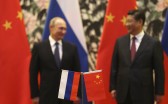
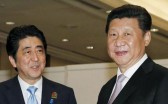
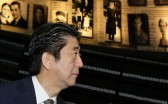
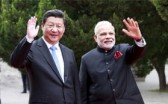
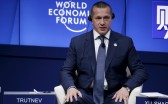
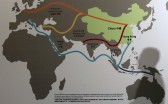


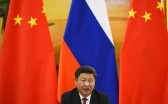
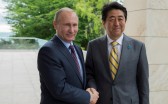
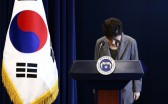
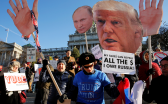
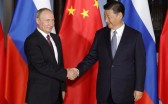
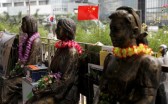
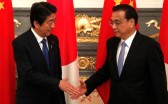
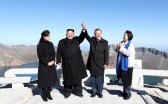
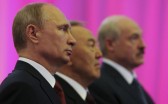
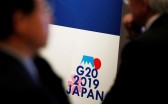



 Print
Print Email
Email Share
Share Facebook
Facebook Twitter
Twitter LinkedIn
LinkedIn